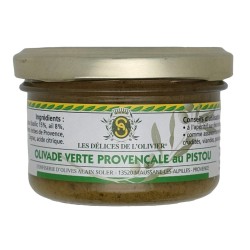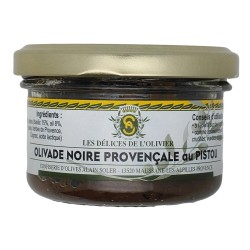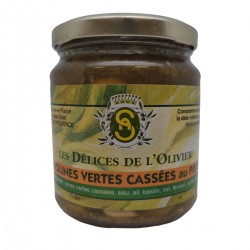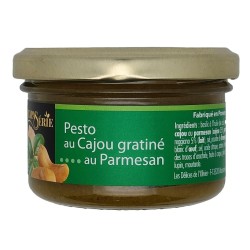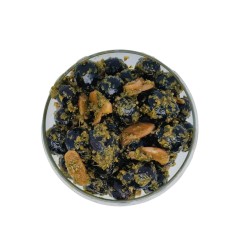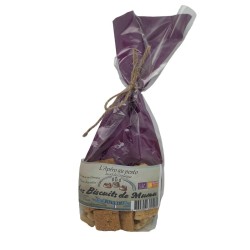
Italian Pesto and Provençal Pistou at Les Délices de l'Olivier
Discovering Italian Pesto and Provençal Pistou
Introduction:
Welcome to the sunny world of Mediterranean flavors, where each ingredient dances to the rhythm of ancient traditions.
In this article, we will delve into the heart of two iconic culinary treasures: Italian Pesto and Provençal Pistou.
On one hand, Pesto, a jewel of Liguria in northwest Italy, blends Genovese basil, pine nuts, olive oil, garlic, and the delightful Parmesan or Pecorino cheese.
On the other hand, Pistou, the French cousin of Pesto, transports us to the sunny hills of Provence, combining basil, garlic, and olive oil, with a local touch excluding pine nuts and offering cheese as an option.
Prepare for a gustatory journey through the streets of Genoa and the fields of Provence, where aromas and traditions blend to create an unforgettable culinary experience.
Section 1: Italian Pesto 
Italian Pesto transports us to the enchanting region of Liguria, nestled in northwest Italy.
It's a true symphony of flavors traditionally composed of Genovese basil, pine nuts, olive oil, garlic, and grated cheese such as Parmesan or Pecorino.
Purists will insist on the importance of Basilico Genovese, the basil of Genoa, to strictly adhere to the traditional recipe.
In cuisine, Italian Pesto is frequently paired with delights such as potato gnocchi, minestrone, and various pasta varieties, notably linguine or tagliatelle.
Each bite transports the taste buds on a gustatory journey to the heart of Liguria.
Section 2: Provençal Pistou 
Originating from the South of France, in Provence, Pistou is the French descendant of Italian Pesto, elegantly crossing the Franco-Italian border.
Its composition shares many similarities with Pesto, with two exceptions: the absence of pine nuts and the option to include cheese.
Pistou reveals all its splendor in the famous soupe au pistou, a summer concoction bringing together vegetables, pasta, and the delicate touch of this Provençal sauce.
Rooted in Mediterranean cuisine, Pistou also graces a variety of Provençal dishes, from salads to pastas to grills.
Its versatility makes it a signature aroma of Provence.
Section 3: Pistou and Pesto in Recipes
Let's now explore how Pistou and Pesto are incorporated into simple recipes, capturing the Mediterranean essence with every bite.
For Pistou:
- ¼ clove of garlic
- 10g of basil
- 2 tablespoons of olive oil
And for Pesto, add:
- 1 teaspoon of pine nuts
- 40g of Parmesan or Pecorino cheese
Simple ingredients that, when combined, create sauces imbued with the culinary richness of their respective regions.
These aromatic blends can be enjoyed as appetizers, spread on bread, or used to enhance various traditional Provençal or Italian dishes.
Section 4: Tasting and Culinary Uses
Tasting Pistou and Pesto is a sensory experience that awakens the taste buds to the Mediterranean terroir.
Here are some tips to fully appreciate these culinary treasures:
Tasting:
- Savor Pistou and Pesto as appetizers on toasted bread slices for an immediate immersion into their sunny flavors.
- Explore different textures and flavors by incorporating them into fresh salads, grills, or pasta dishes.
Culinary Uses:
- Pistou is an essential ingredient in the Provençal soupe au pistou, but don't hesitate to experiment with it in pasta dishes, salads, or even sandwiches.
- Italian Pesto, on the other hand, pairs perfectly with gnocchi, minestrone, or various pasta dishes, bringing an explosion of flavors.
Whether in the Provençal freshness or the Italian warmth, Pistou and Pesto transcend culinary borders, offering an infinite palette of gastronomic possibilities.
Conclusion:
In summary, Provençal Pistou and Italian Pesto, though related, reveal subtle differences.
Pistou, born in the South of France, lightens up by omitting pine nuts and offering cheese as an option.
This Provençal simplicity provides a refreshing alternative to the more robust Italian Pesto.
Whether you choose Provence or Liguria, these two Mediterranean sauces invite you to savor unique variations of the same culinary inspiration.


